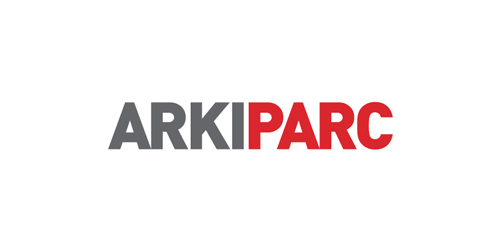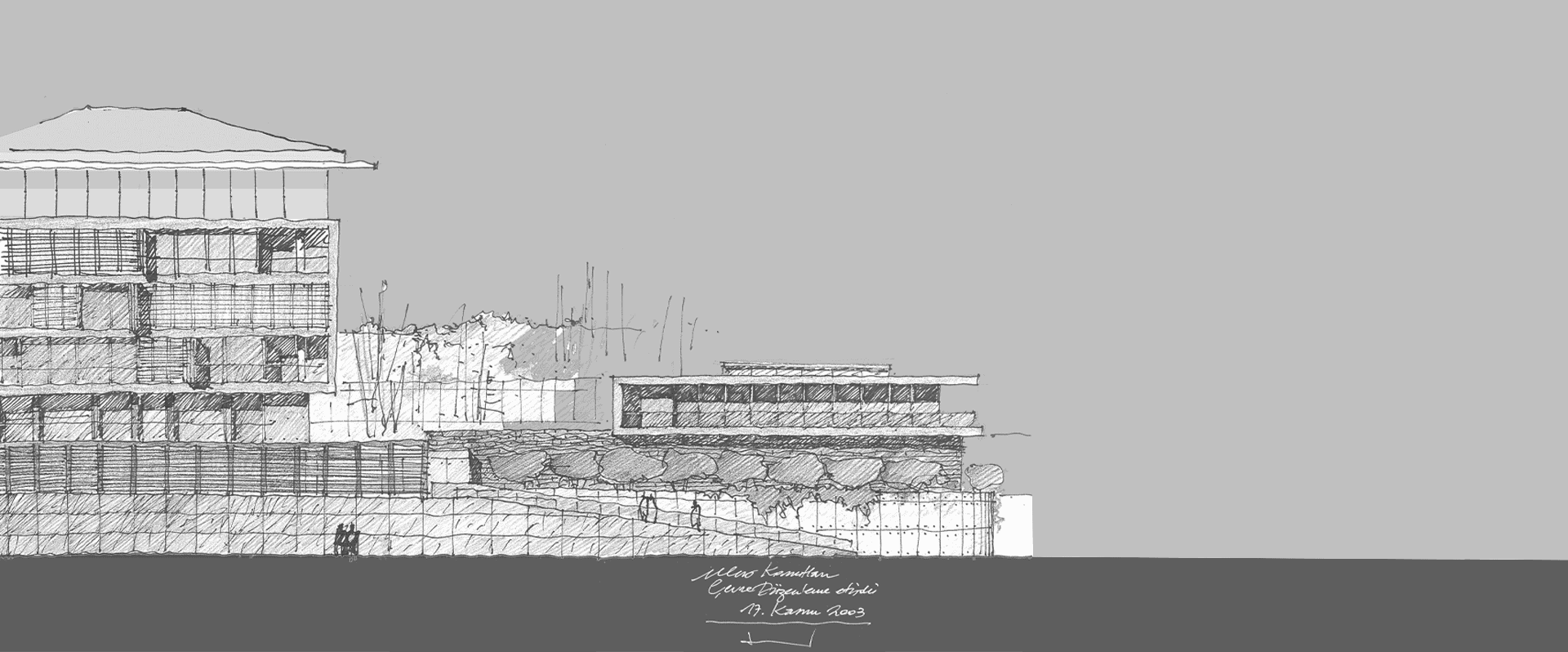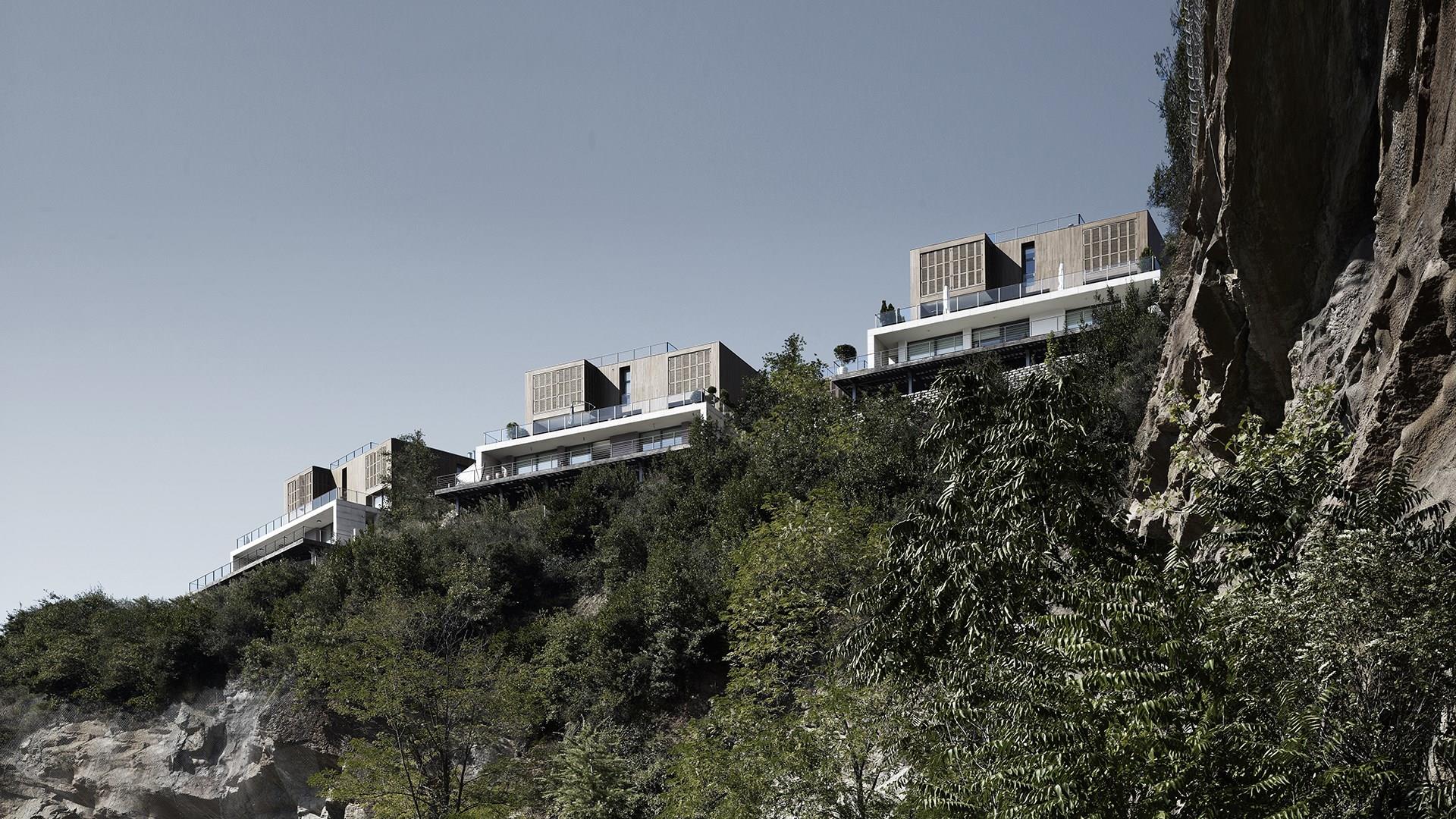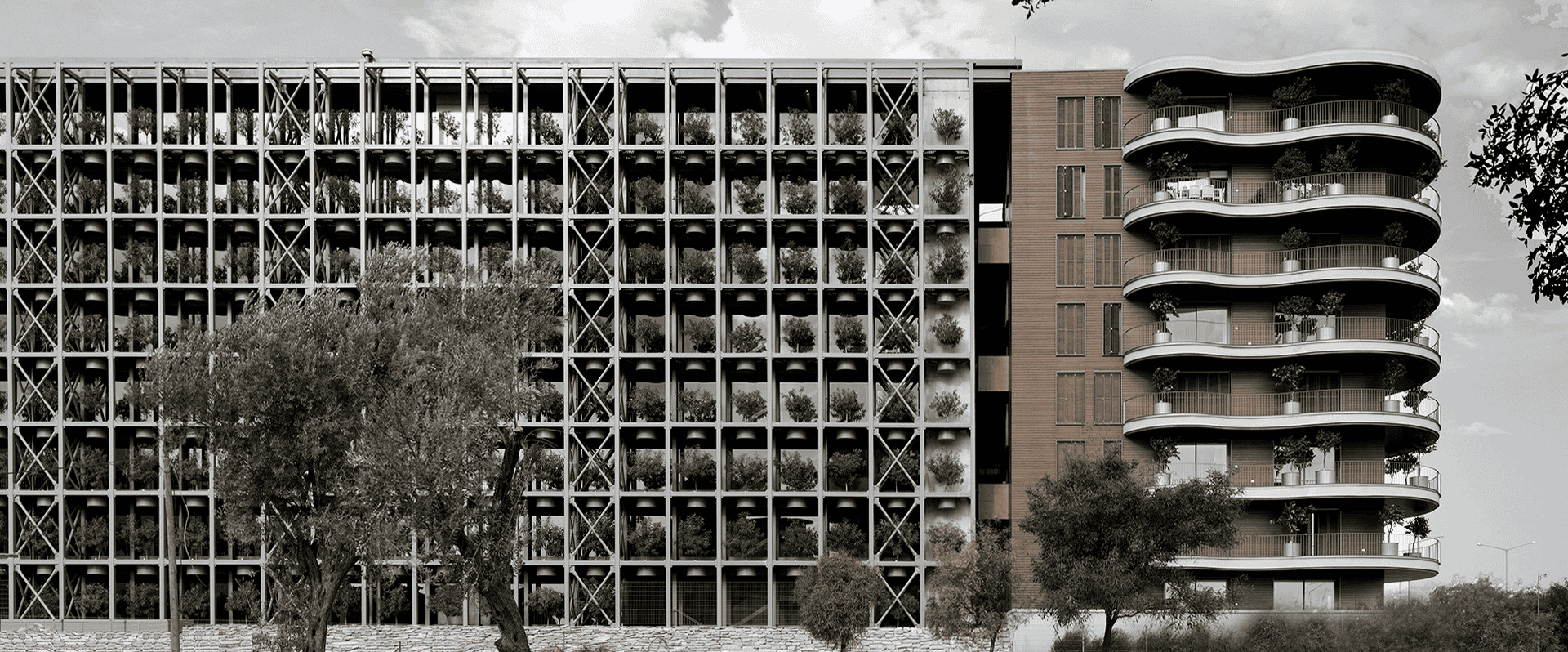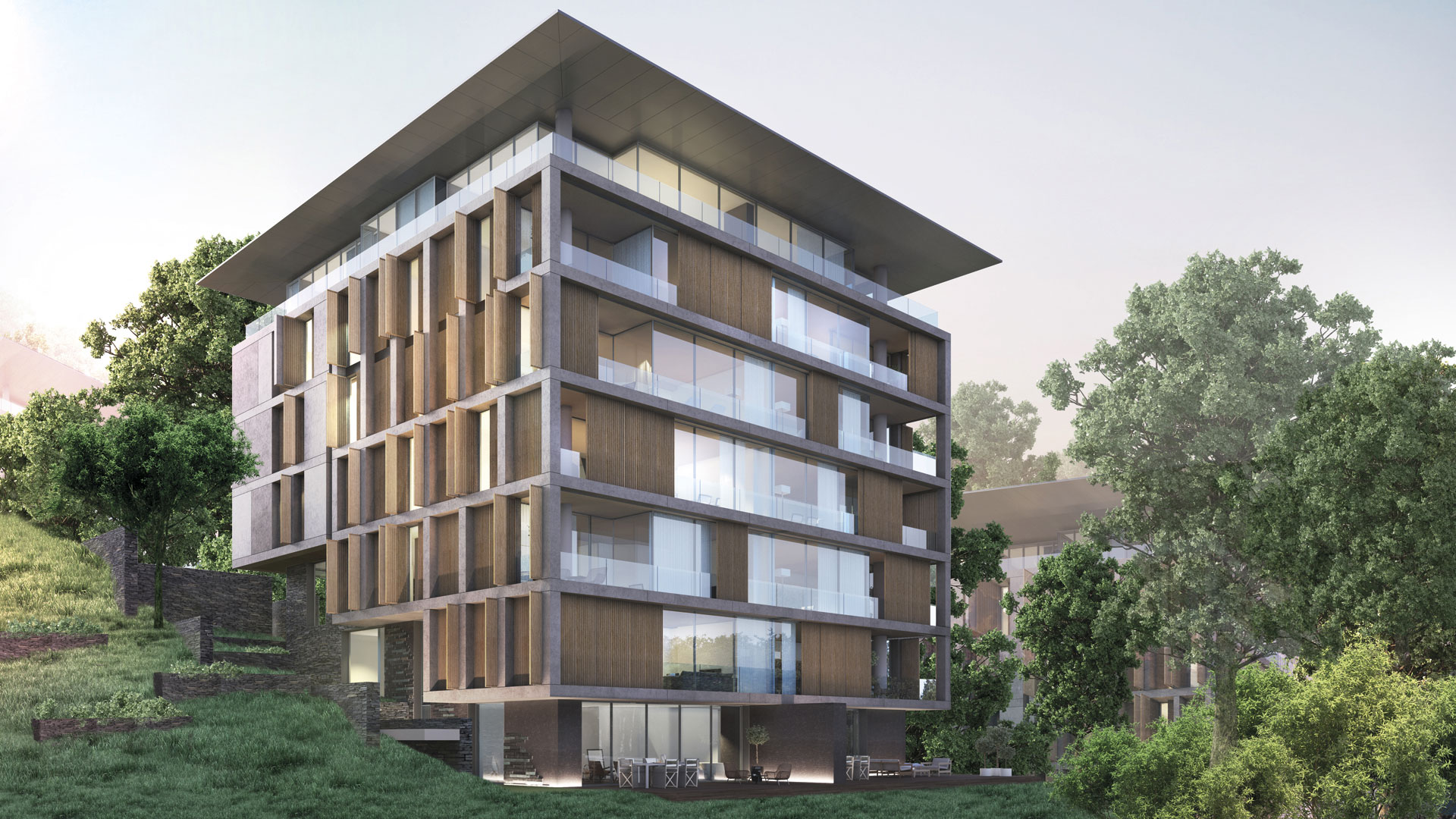Çekmeköy is a rapidly developing area of Istanbul that was recently been opened to new construction. Local building regulations were drawn up, taking into consideration projects that would be carried out by large construction firms. Municipal zoning rules detail restrictions to the total construction area, a height limited to nine stories, and the methods for defining elevations and proportions. In a rather clear, irrevocable way, the firm investing in the project determined matters related to the market and terms of sale. These included the distribution of housing units according to their size, the number of rooms, size of service areas per square meter, types of materials that could be used and their details, as well as cost limits. The main purpose of this 100.000 square meter (nearly 1,1 million square foot) project was to interpret architecturally these strictly defined rules.
The design took shape as an inward-turned, homogenous structure, rather than the scattered and staggered individual apartment buildings typical of the conventions within Turkey’s construction sector; the project was completed in 2006. A large area in the middle of the housing blocks includes private areas on the peripheries and communal space in the lowered middle portion. All vehicular circulation was confined to the road outside of the housing blocks and to the garage below.
*by Philip Jodidio, Emre Arolat Architects: Context and Plurality, Rizzoli New York, 2013.
















